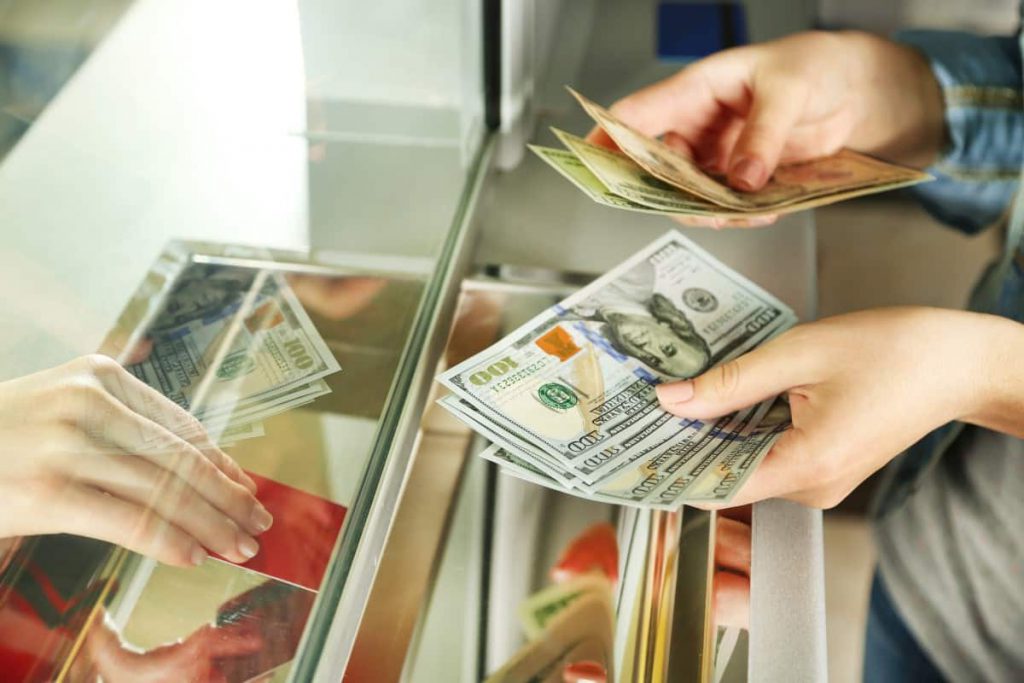
U.S. dollar skyrocketed to a 20-year high. What about Euro?
The U.S. dollar rallied to a 20-year high against a basket of currencies on Wednesday. At the same time, the common currency broke below parity against the USD after data showed today that U.S. consumer price inflation soared to a 40-1/2-year high in June.
The consumer price index jumped by 1.3% last month as food and gasoline costs remained elevated, more than the 1.1% expected by analysts. This data cemented the case for the U.S. Federal Reserve to increase interest rates by 75 basis points later this month.
Consumer prices are skyrocketing, driven by snarled global supply chains, as well as the massive fiscal stimulus from governments early in the coronavirus pandemic. Moreover, the ongoing war in Ukraine, which has caused a surge in global food and fuel prices, has also worsened the situation.
Consequently, U.S. gasoline prices rose to record peaks in June, averaging above $5 per gallon. They have since decreased from last month’s high and were averaging $4.631 per gallon today. That might ease some of the pressure on consumers.
However, labour market tightness is another problem, underscored by the fact that there were almost two jobs for every unemployed person at the end of May. The Federal Reserve wants to cool demand in the economy, aiming to bring inflation down to its 2% target.
Forex markets expect the U.S. central bank to hike its policy rate by another three-quarter of a percentage point at its July 26-27 meeting. The bank has already increased its overnight interest rate by 150 basis points since March.
How is the Euro trading today?
The common currency tumbled down to $0.9998 against the U.S. dollar on Wednesday, breaking below the $1 level for the first time since Dec. 2002. However, it managed to bounce back to trade at $1.0024 at last. Meanwhile, the dollar index hit 108.59, soaring to the highest peak since Oct. 2002, from around 107.9 before the data was released.
In Asia, a benchmark index of emerging market stocks jumped on Wednesday. Chinese shares got support after new data showed buoyant export growth in June. After that, investors’ focus pivoted to crucial U.S. inflation figures, as well as Chile’s central bank decision that is due later in the day.
In June, China’s exports grew at their fastest pace in five months, exceeding economists’ expectations and sending shares 0.4% higher. Overall, the benchmark EM stocks index climbed up by 0.3% after two consecutive days of losses amid a broader risk-off driven by global growth concerns.
Arun Sai, the senior multi-asset strategist at Pictet Asset Management in London, noted that China could continue to recover. It has policy headroom, as well as the tailwind from reopening that could last a while longer. However, analysts have seen a sharp overall selloff in markets. Thus, they expected some standardization in risk sentiment.
Arun Sai also added that the big picture for EMs hasn’t changed. Markey participants have yet to see signs of peak inflation. That is crucial for EM as an asset class to outperform.
Analysts expect the data to show that Argentina’s already sky-high inflation accelerated to 5.4% in June, pushed higher by food and fuel costs.
What about the EM currencies?
South Korea’s won edged up by 0.2% after the Bank of Korea hiked its policy interest rate by an unprecedented half point. The bank wanted to pull inflation from 24-year highs. Meanwhile, Chile’s central bank will likely increase rates by 100 bps to 9.5% later in the day.
Some economists think that with aggressive monetary tightening cycles, worsening inflation dynamics, a surging greenback and softening commodity prices, the outlook for EM assets will likely remain challenging this year.
Regional currencies traded mixed today. South Africa’s rand and Mexico’s peso soared against the dollar. On the other hand, India’s rupee plunged to a record low for a third consecutive session, and Turkey’s lira dropped by 0.3%.
Moreover, Turkey’s unemployment rate plummeted by 0.3 percentage points month-on-month to 10.9% in May. However, data showed that a measure of labour underutilisation jumped by 0.8 points to 22.4%.
At the same time, Sri Lankan Prime Minister Ranil Wickremesinghe announced a state of emergency in the country. The acting president after President Gotabaya Rajapaksa has fled to the Maldives. Stock markets were closed today. They are set to resume on Thursday.


